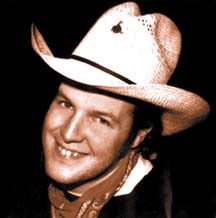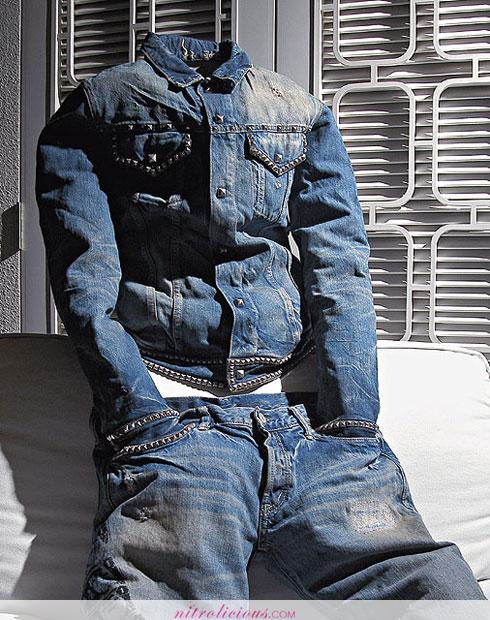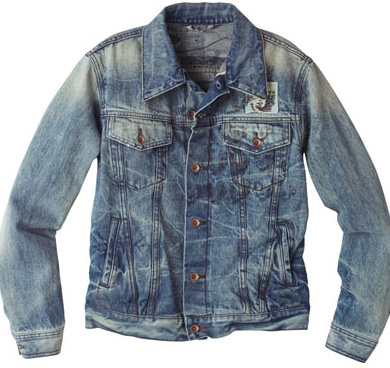Theatre Kultur
In the early ’80’s we were living in the alternative theatre and punk scene in Toronto. Headquarters was at the Cameron. Paul Sannella was both bartender and owner. He managed and ran the place (not) exactly as the tribe model Scott at Theatre Ideas has been proposing. Michael Hollingsworth and his theatre Video Cabaret lived upstairs.
Odd duck waiter at the Cameron was artist Andy Paterson. Something Andy said still haunts and hunts me now some 25 years later. Our Marat Sade crew were primo punk distrupters back then and Andy got so pissed at my shenanegans one night he said, “Nick, why don’t you do everyone a favor, and just commit suicide.”
So Andy had called my bluff of punk nihilism and shut me up for one night, forcing me into deep thoughts on the meaning of my life and art. Both in terms of money and rowdyness, Paul always allowed our ragtag Marat Sade tribe and others to run an open tab at the Cameron. We ran an after hours place a block down on Queen Street and after 1 a.m. we gave the Cameron House tribe the same open tab. Mike Nightmare and the Wild Things along with Zero provided the music for the Marat Sades. At the Cameron House one of the music staples was Handsome Ned.
Ned built his legend with his Cameron solo shows. He’d roll downstairs from the tiny room he lived in over the bar, first holding court in the Cameron’s front room and then sliding to the back for his shows. The upper three floors housed an impossible artists’ community in the 18 or so rooms that were “rented,†actually traded, to visual artists and musicians whose artwork or songs filled the dilapidated public house below.
Molly Johnson, Holly Cole, Big Sugar’s Gordie Johnson, visual artist Tim Jocelyn, playwrights Deanne Taylor and Michael Hollingsworth were just some who benefited from the creative landlording of Cameron owners Herb Tookey, Paul Sannella and Anne-Marie Ferraro, who also lived in the rooms among their tenants.
Molly Johnson performed her own reisdency-for-rent, the Blue Mondays shows, which launched the then art-rocker into her jazz career, at Tookey’s suggestion.
“We all shared one bathroom, and the bath tub was up over the back room stage,†says Johnson. “I’d have my bubble bath while Ned did his matinees, and I could just see him through a hole in the floor for the drain pipe.â€
Unlike at the recent reincarnations of the Drake and the Gladstone further along Queen, the old-time drinkers who inhabited the Cameron before the artists arrived weren’t booted out. Crusty types like Cameron regular Carl Johnson just became part of the mix, and when Ned sang classic Hank Williams or Tex Ritter songs in the back, what was new to the young crowd was familiar fare to the bar’s senior citizens, who were often Ned’s biggest fans and harshest critics.
The story Paul relates about the “ten ants” happened after our theatre had already moved to New York. Of course this type of tribe could only live on the fringe or underground of a large urban center like Toronto. Likewise our Marat Sade tribe which produced its theatre and life style out of the patronage of the after-hour scene of a large city. Such a lifestyle and theatre model is probably much different than the one Scott envisions in Independence, Missouri. For those interested I have written about the model and lifestyle of the Marat Sade tribe in an essay Theatre Pas Muraille. It was a fun and famous time for all of us. But fame within the punk ethic is the perfect counter to Nylachi’s notion of fame and fortune. Culture all looks like Kultur from the punk perspective. Although there can never be a revolution, there can be a constant rebellion against the values that the dominant culture promotes.
When people describe Queen Street at the time, words like “community,†“village†and even “oasis†come up. There was a freedom in being so off the radar, and bands weren’t competitive with each other. They were all striving, but not fighting, for a piece of the pie, because there was no pie on offer.
In preparing to write this post I was googling for that famous quote from that famous artist who had famously examined the nature of fame in all his work when I found a press release which contained the quote.
The collection is designed to pay homage to the collective iconography of both the Levi’s® brand and Andy Warhol’s famed pop-culture art. The collection leverages Levi’s® great fit in jeans and jackets and is embellished with imagery reflective of Andy Warhol’s more famous artwork and sayings such as: “Fashion wasn’t what you wore someplace anymore; it was the whole reason for going.†The collection will be available at super-premium retailers and will debut in spring 2006.
Warhol Factory X Levi’s® Marilyn Jean Jacket
COLOR: DARK BLUE – $400.00
The classic trucker with Warhol Factory X Levi’s® collection details — a Marilyn patch topstitched on the front and the same famous image painted on the center back panel. Shoulders have a retro-look wash and wear; all edges are lightly abraded. A subtle pattern is screen printed inside. Styled with handwarmer pockets and side tabs. Closes with signature Warhol buttons. Country Of Origin: Imported.
I would feel stupid wearing above jacket, slightly “gift wrapped” myself, even though I had worn a similar beat-up trucker vest jacket back in the Toronto days. More than that though, the $400 price tag of the above jacket represents a week salary at my primary day job. I am in the league with all those Chicago theatre bloggers (Don, GreyZelda, Bob, Tony, Nick) who have their day job as the chief patron of their art. In working with rat theatres I found the day job to be the primary patronage system of most of the independent theatre produced in this country. Most often box office, grants, and other forms of patronage are able to cover the production costs of theatre and perhaps a small stipend to the artists, but little else. Members of the ensembles all have day jobs and often it is this interconnection with the “real” world of commerce that the theatre finds its true support.
The “retro-look” is a way of packaging and selling something that no longer really exists. I was thinking about this in relationship to the recent article in the Times that examined the trend of regional theatres toward spending millions on building gargantuan new facilities. This is money being spent, regardless of denials, not in support of local artists but in the house meant to attract national talent.
And it’s true that the building boom, particularly among the aging lions of the regional movement, is partly about creating whiz-bang “destination†theaters that will attract national talent. (Also, younger audiences.) But the companies say they are doing this to enhance or recapture their mission, not discard it.
At the same time they seem to be making pre-emptive statements about their centrality to the culture. In the last two years alone the Guthrie Theater in Minneapolis moved into its new $125 millionJean Nouvel home overlooking the Mississippi River; Arena Stage in Washington broke ground on the $120 million Mead Center, designed by Bing Thom; and the Dallas Theater Center, in the city where the regional movement arguably began, started buildingRem Koolhaas’s Wyly Theater, part of a cultural complex pegged at a Texas-size $338 million.
“You either grow or you die,†said Joe Dowling, the Guthrie’s artistic director.
Quotes from Mike Daisey’s How Theatre Failed America are used throughout this excellent article. Mike’s observations pulled out of the Us/Them framework serve well to show how not just the regional theatres have lost their direction but theatre culture itself has.
Fandom is different than audience is different than community. Theatre can function as a counter to the Dominant Culture as it searches for its audience and community. Or not. The whole of theatre culture seems content to relax now into its new design model that Kultur is prepared to offer it. The Destination where aging baby boomers squeezing their fat asses into “relaxed fit” Levis can mingle with hip new youngsters in retro-look jackets. And “all edges are lightly abraded” to give illusion of something that has actually been worn and lived in.

.



One thought on “Theatre Kultur”
Hey Nick,
Michael Hollingsworth and the Video Cabaret are still at the Camera House knocking it out of the park with their ongoing “The History of the Village of the Small Huts” series. Last year’s entry, “The Saskatchewan Rebellion”, was easily one of the best productions I’ve ever seen.
Fun to see you writing about them here!
Comments are closed.